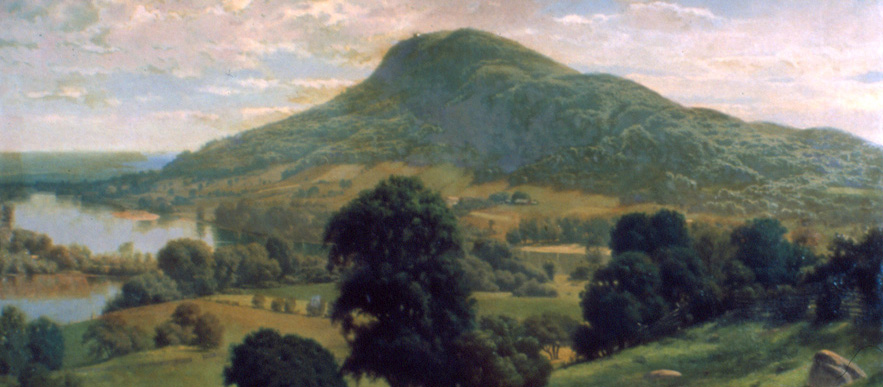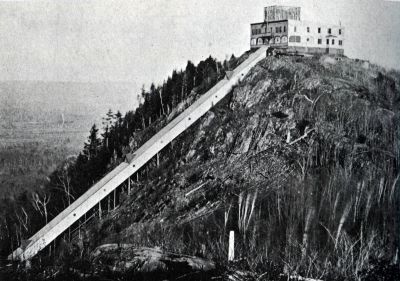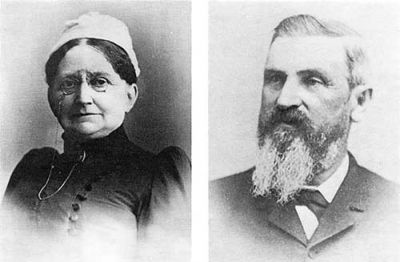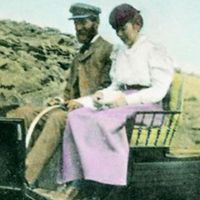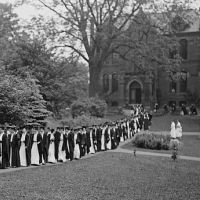By the 1840s, there was an alternative to hiking. In 1846, a carriage road was built up the western slope. In 1849 newlyweds John and Fanny French visited the summit. Confident of its commercial potential, they bought the property and began constructing a two-story, eight-room hotel. When it opened on July 4, 1851, several hundred people attended the dedication.
With the closest source of water halfway down the mountain, John French built a wooden railway to haul barrels of water up the track. Power was provided by a horse hitched to a circling crank at the top.
French soon realized that, properly equipped, the tram could also transport people. He installed the body of a sleigh, and passengers were soon being carried over 600 feet up the mountain. Moving at a 38-degree angle, riders had the sensation of being pulled almost straight up.
In 1856, French replaced the horse with a steam engine. As more and more visitors used the tramway, he covered it with a roof and added two six-passenger cars.
By the 1860s, tourists could choose to ride the tram all the way to the top — they disembarked right in the hotel — or ascend the mountain by foot, horseback, or coach, and finish by climbing a 522-step stone stairway.
For much of the nineteenth century, the Mt. Holyoke summit was among the region's most popular destinations. First came artists, such as Thomas Cole, who painted a famous picture of the Connecticut River "Oxbow" in 1836. Writers were also inspired by the panorama of mountains, valley, fields, towns, river, and sky. Ralph Waldo Emerson, Henry Wadsworth Longfellow, and Emily Dickinson were among the many writers who visited the summit.


